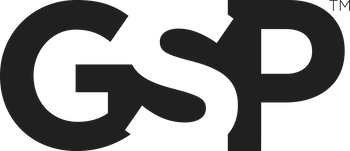‹ INSIGHTS | RETAIL BETTER BLOG
PSYCHOLOGY OF THE STORE EXPERIENCE - PART 4
June 2, 2016 by Craig Neuhoff – In this four-part series, GSP explores the psychology of shoppers – how the consumer processes information and how to translate that into an effective in-store strategy. Part 1 and Part 2 reviewed why consumers shop and what they think about when shopping. Part 3 reviewed how a consumer makes a purchase decision.
We have been consulting The Cognitive Psychology of Shopping and In-Store Marketing by Hugh Phillips, Ph.D., to better understand how to merchandise.

Part IV: How to best position the products in your store
In Part III, we learned that the consumer scans a “vertical block” to find the product he/she wants. So, knowing the psychology of the shopper, what is the best way to merchandise your store? How do you get the right brands in front of the consumer?
Signpost brands
The most valuable real estate in a store, as you know, is eye-height. One way is to incorporate signs into your displays to attract attention to specific items. This helps to guide the consumer to his/her favorite brands and breaks up a “long run” in aisles.
How do you deal with promotions?
Promotions are the area that tends to lead to visual store clutter. While it can look like there’s a lot going on in the store, too many promotions can also send the consumer back into subconscious shopper mode. (He/she tunes out.) Best practices suggest that limiting the number and the placement of promotions benefits the consumer in terms of clarity and a cleaner-looking store. This is also why aisle end caps are so effective, because they’re not only in an easy-to-access location but already the perfect “vertical block.”
Cognitive Maps
A cognitive map is a consumer’s perceived map of where things belong in your store. It’s usually based on a mixture of actual experience at similar stores and some best guesses. For example, we expect all of the frozen food to be together in one section. That would be its “natural grouping.”
How to introduce new products
As the saying goes, “You are judged by the company you keep.” So where do you put new products? There are several solutions:
- If a product fits in with a natural grouping, add it there.
- If a product complements another item, create an adjacent grouping.
- If a product fits into two natural groupings, place it in both locations. (For example, do refried beans belong with the canned goods or the Mexican food section?) This is called dual positioning and it will garner sales from consumers with different cognitive maps.
But what if the new product has no natural grouping and there is no preconceived positioning? It’s up to you to establish a new location for the consumer because it will not be on his/her cognitive map.
Disruptive merchandising
Vendors usually suggest disruptive merchandising to introduce their products. They think placing products in an unusual location will attract attention. However, most disruptions go unnoticed by the subconscious shopper.
Imposing your own merchandising rationale
One retailer re-merchandised its hair care department according to the natural sequence of grooming: first, shampoo; then, conditioner; then blow dryers and irons; then styling aids. It seemed rational. But consumers rejected the idea because they thought they had stumbled into small electrics by accident. Remember, a subconscious consumer does not shop rationally.
That’s not to say the consumer doesn’t appreciate suggestions. If you want to create a brand shop (say the Marimekko collection at Target) or suggest a whole outfit that coordinates well together, from shoes and accessories to tops and bottoms, consumers will appreciate your expertise in placing like items together – you’ve made shopping easier for them.
A final word on cognitive maps: they are not sacred. There will be times when you can make changes that will help the consumer. There are also several times a year when the cognitive map gets messed up anyway, such as when Christmas merchandise is introduced. Sales levels will be affected unless a store associate is around to ask or until the consumer’s cognitive map adapts to the change (about two weeks). How can you lessen the damage? By moving seasonal items to one specific promotional area where it’s expected that items rotate in and out.




